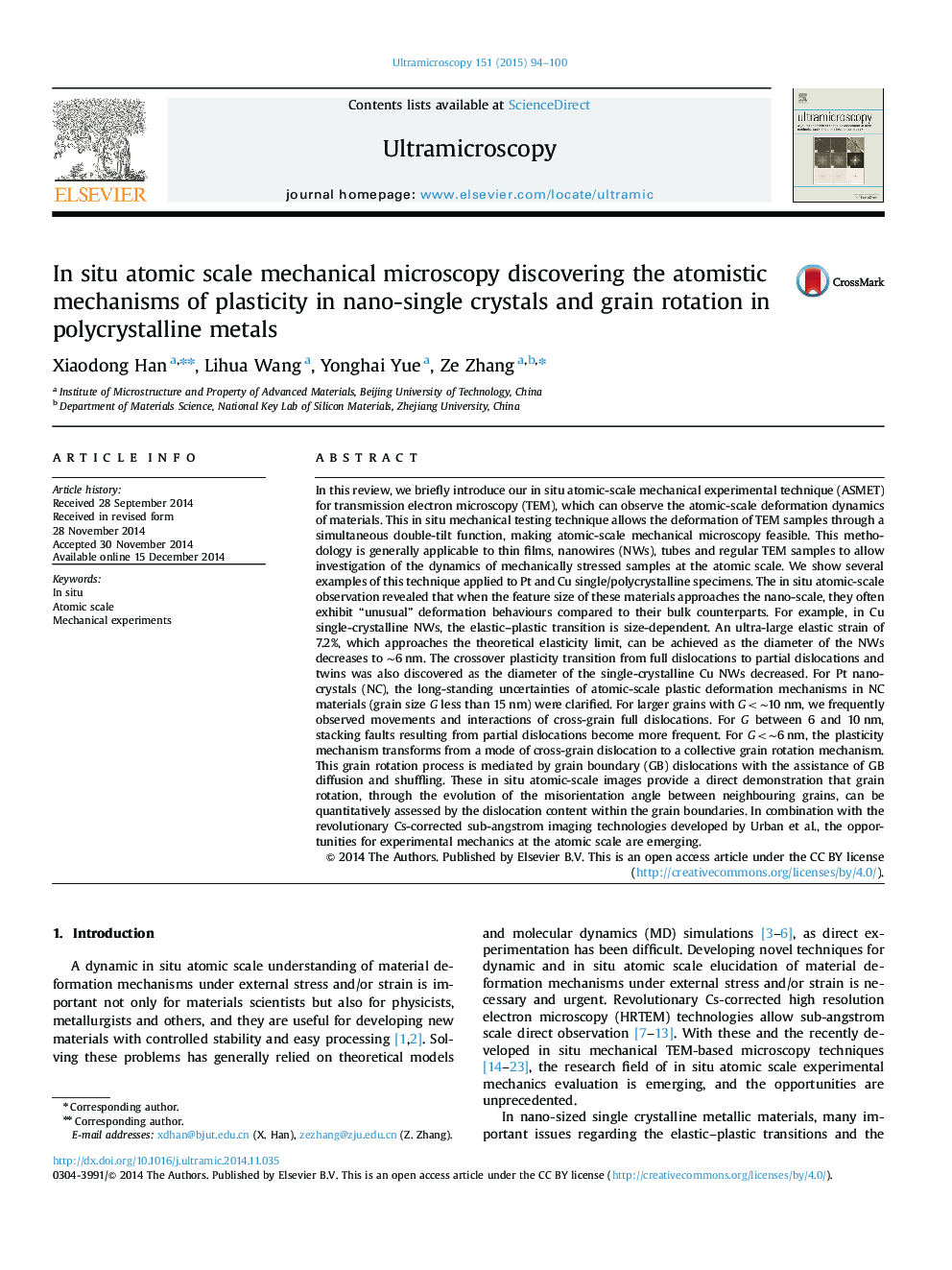| Article ID | Journal | Published Year | Pages | File Type |
|---|---|---|---|---|
| 8038144 | Ultramicroscopy | 2015 | 7 Pages |
Abstract
In this review, we briefly introduce our in situ atomic-scale mechanical experimental technique (ASMET) for transmission electron microscopy (TEM), which can observe the atomic-scale deformation dynamics of materials. This in situ mechanical testing technique allows the deformation of TEM samples through a simultaneous double-tilt function, making atomic-scale mechanical microscopy feasible. This methodology is generally applicable to thin films, nanowires (NWs), tubes and regular TEM samples to allow investigation of the dynamics of mechanically stressed samples at the atomic scale. We show several examples of this technique applied to Pt and Cu single/polycrystalline specimens. The in situ atomic-scale observation revealed that when the feature size of these materials approaches the nano-scale, they often exhibit “unusual” deformation behaviours compared to their bulk counterparts. For example, in Cu single-crystalline NWs, the elastic-plastic transition is size-dependent. An ultra-large elastic strain of 7.2%, which approaches the theoretical elasticity limit, can be achieved as the diameter of the NWs decreases to â¼6Â nm. The crossover plasticity transition from full dislocations to partial dislocations and twins was also discovered as the diameter of the single-crystalline Cu NWs decreased. For Pt nanocrystals (NC), the long-standing uncertainties of atomic-scale plastic deformation mechanisms in NC materials (grain size G less than 15Â nm) were clarified. For larger grains with G<â¼10Â nm, we frequently observed movements and interactions of cross-grain full dislocations. For G between 6 and 10Â nm, stacking faults resulting from partial dislocations become more frequent. For G<â¼6Â nm, the plasticity mechanism transforms from a mode of cross-grain dislocation to a collective grain rotation mechanism. This grain rotation process is mediated by grain boundary (GB) dislocations with the assistance of GB diffusion and shuffling. These in situ atomic-scale images provide a direct demonstration that grain rotation, through the evolution of the misorientation angle between neighbouring grains, can be quantitatively assessed by the dislocation content within the grain boundaries. In combination with the revolutionary Cs-corrected sub-angstrom imaging technologies developed by Urban et al., the opportunities for experimental mechanics at the atomic scale are emerging.
Keywords
Related Topics
Physical Sciences and Engineering
Materials Science
Nanotechnology
Authors
Xiaodong Han, Lihua Wang, Yonghai Yue, Ze Zhang,
